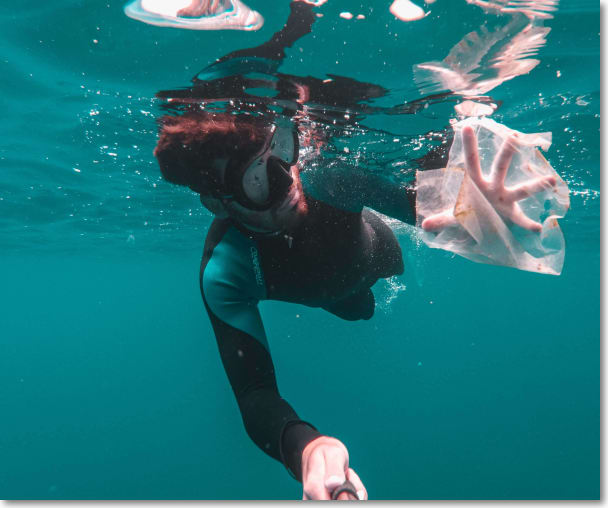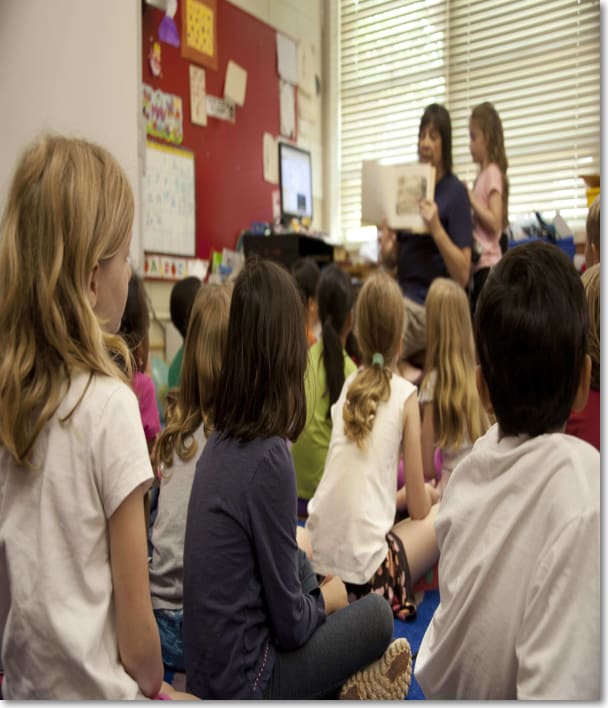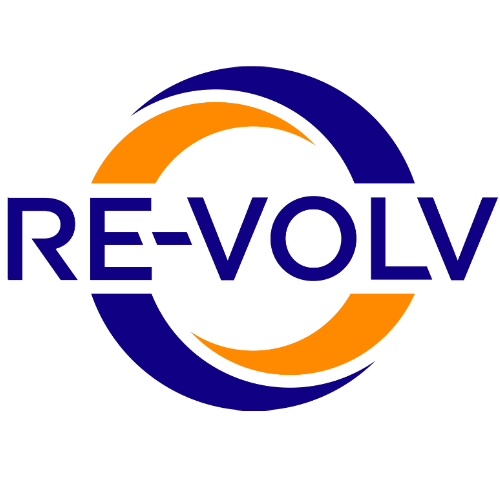Teaching Students about Climate Change: Ocean Plastic Unit Lesson
In elementary school, most states across the country follow the Next Generation Science Standards to identify what curriculum to teach each grade level throughout the year. With the number of standards that students need to master in science in addition to all the other subjects, it’s difficult to add in additional science lessons that do not meet the required standards.
Many teachers want to teach their students about climate change, renewable energy, and sustainability, but lack of class time greatly inhibits this, since oftentime these topics are not included within the required standards. That’s why we created the Sustainability for Young Learners courses, which are sustainability-themed science unit plans that incorporate sustainability education into the Next Generation Science Standards. This allows teachers to teach about important, real-world issues such as climate change, without taking away class time needed to teach the required standards.

About the Sustainability-Themed Unit Plan
The third grade sustainability-themed unit plan is titled, Ocean Plastic - The Problem and the Solution. In this unit, students learn that our oceans are changing, and it is predicted that by 2050 there will be more plastic in the ocean than fish. In this unit, students learn about the physical changes of increased amounts of plastic pollution in the ocean and how that is affecting ocean life. Students will also learn about several solutions to mitigate the problem and use critical thinking skills to come up with their own solutions.
This unit plan contains five, 45-minute lesson plans that includes videos related to the unit's topic, student worksheets, a final project, and a teacher resources section. A PowerPoint has been created for this unit to help guide the class through the lesson, view resources such as videos and photos, and review the lesson’s vocabulary words.
How to Teach Kids about Sustainability

When teaching kids about sustainability, it’s important to accurately portray the facts and issues of the problem you're discussing, such as sea level rise, melting ice caps, severe storms, plastic pollution, etc., while still ending each lesson with hope and optimism. The goal when teaching young learners about sustainability issues is to ensure that students know about the problems while also offering solutions that students can incorporate into their daily lives.
Below is a list of tips to keep in mind when teaching students about sustainability:
- 1. Refrain from focusing on the doom and gloom and end lessons on a positive note.
- 2. When presenting a problem, try to always present a solution as well.
- 3. Focus some of the solutions on actions that students can incorporate into their daily lives.
- 4. Encourage students to think about solutions to the issues presented to engage their critical thinking skills.
- 5. Include a local focus into the lesson to allow students to better relate to the content.
- 6. Sustainability affects many aspects of our lives, including agriculture, water, weather, resources, etc., and does not have to be taught in a silo in science classes. Sustainability can be incorporated into lessons in Language Arts, Math, Social Studies, and Art.
- 7. Include pictures and videos within the lessons to help students visually see the problems being discussed.
- 8. End the unit with a class pledge that is hung in the classroom highlighting daily actions the class pledges to commit to, such as proper recycling or picking up trash.
Standards this Sustainability Unit Follows
This lesson covers two of the third grade Next Generation Science Standards, including: “ LS2.C: Ecosystem Dynamics, Functioning, and Resilience - When the environment changes in ways that affect a place’s physical characteristics, temperature, or availability of resources, some organisms survive and reproduce, others move to new locations, yet others move into the transformed environment, and some die.”
“3-LS4-4: Biological Evolution: Unity and Diversity - Make a claim about the merit of a solution to a problem caused when the environment changes and the types of plants and animals that live there may change. [Clarification Statement: Examples of environmental changes could include changes in land characteristics, water distribution, temperature, food, and other organisms.] [Assessment Boundary: Assessment is limited to a single environmental change. Assessment does not include the greenhouse effect or climate change.]”
Applying the Ocean Plastic Unit Plan Outside the Classroom
Although this unit plan was created for a third grade classroom setting, the lessons can be slightly modified to be suitable for other grade levels as well. The second grade Sustainability for Young Learners unit plan, titled Our Melting Oceans: Solid and Liquid Water teaches students about solid, liquid, and melting water, which is a second grade standard, and applies that knowledge to the issues with melting ocean ice in the polar regions. The third grade lesson on ocean plastic pollution can also be combined with the second grade lesson on melting ocean ice to teach a larger unit on the impacts that climate change and plastic pollution have on our oceans.
In addition, parents can modify this lesson to teach their children about sustainability at home. This lesson contains a number of videos that help teach young learners about the problems with ocean pollution and different solutions that many companies are implementing to remove ocean plastic. In addition, in lesson 3, there is an interactive activity where students engage in an ocean pollution experiment, which would be a great activity to do with your child at home.
Download the Unit Plan & Powerpoint
Additional Sustainability-Themed Educational Resources
The Sustainability for Young Learners Courses offers additional content for teaching sustainability themes to elementary school students through a week-long unit plan focused on different sustainability themes. Check out our sustainability-themed unit plan for second grade titled, Our Melting Oceans: Solid and Liquid Water, the fourth grade unit plan titled Renewable & Nonrenewable Energy Sources & their Impacts, and the fifth grade unit plan titled, Climate Change: Reducing Food Waste and Composting as a Solution.
Interested in solarizing a nonprofit?
Get a free quote or learn more
Donate
About RE-volv
We believe that everyone should have the ability to support and spread clean energy. So we created a new way for people to take action. It's a pretty simple idea. Through an innovative solar financing model, these nonprofits immediately save on their electricity costs. As these organizations pay us back, we reinvest the money into more solar projects in communities across the country. This creates a revolving fund for solar energy that continually perpetuates itself building more and more solar. It's a pay-it-forward model for solar energy. We call it the Solar Seed Fund. Spread clean energy and make a tax-deductible donation to the Solar Seed Fund.



